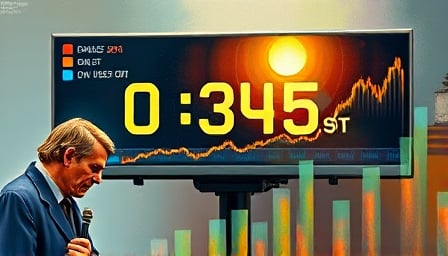FTSE 250: A Week of Volatility and Key Movements
The FTSE 250, a barometer for mid-cap companies on the London Stock Exchange, has experienced a week of notable fluctuations and significant corporate developments. As of July 9, 2025, the index closed at 21,581.7, reflecting a dynamic trading environment influenced by both company-specific news and broader economic concerns.
Victrex and Close Bros: A Tale of Two Companies
The week began with contrasting fortunes for Victrex and Close Bros. On July 8, Victrex, a specialist polymer maker, saw its shares tumble after announcing that its second-half underlying profits might mirror the first half’s performance. This downturn was attributed to a weaker-than-expected performance in its medical division, raising concerns among investors about the company’s growth trajectory.
In stark contrast, Close Bros surged ahead of a court ruling, capturing investor interest and optimism. The anticipation surrounding the legal outcome played a pivotal role in the company’s stock performance, highlighting the impact of external events on market sentiment.
Currys and Plus500: Diverging Paths
Earlier in the week, on July 7, Currys experienced a significant slide following a downgrade by RBC Capital Markets from ‘outperform’ to ‘sector perform.’ The bank’s decision to suggest taking profits after a strong run led to a decrease in Currys’ share price, despite maintaining a 140p price target.
Conversely, Plus500 enjoyed a rise, showcasing the diverse factors influencing the FTSE 250. The contrasting fortunes of Currys and Plus500 underscore the index’s sensitivity to sector-specific news and broader market trends.
Greggs and the Heat Sensitivity
Greggs, a prominent player in the food chain sector, provided an interesting insight into the impact of external factors on business performance. In its first-half trading update, Greggs reported a 6.9% increase in total sales to £1.03 billion, with like-for-like sales up by 2.6%. However, the company highlighted its sensitivity to heat, affecting consumer behavior and, consequently, sales patterns. Greggs continues to anticipate net new store openings for the full year, projecting between 140 to 150, indicating a strategic focus on expansion despite external challenges.
Trade War Rhetoric and Market Resilience
The week also saw the FTSE 250 navigating through the choppy waters of international trade tensions. Despite President Donald Trump’s threats to impose hefty tariffs on copper and pharmaceuticals, London stocks, including the FTSE 100, demonstrated resilience, edging up by midday on July 9. This resilience amidst trade war rhetoric underscores the market’s ability to absorb external shocks, reflecting investor confidence in the underlying strength of the UK economy.
Conclusion
The FTSE 250’s performance over the week encapsulates the complexities of the financial markets, where company-specific news, sector trends, and global economic factors intertwine to shape market dynamics. From the contrasting fortunes of Victrex and Close Bros to the resilience shown in the face of trade war threats, the index continues to offer a fascinating glimpse into the challenges and opportunities facing mid-cap companies in the UK. As the market moves forward, investors and analysts alike will be keenly watching for signs of stability and growth in this ever-evolving landscape.
